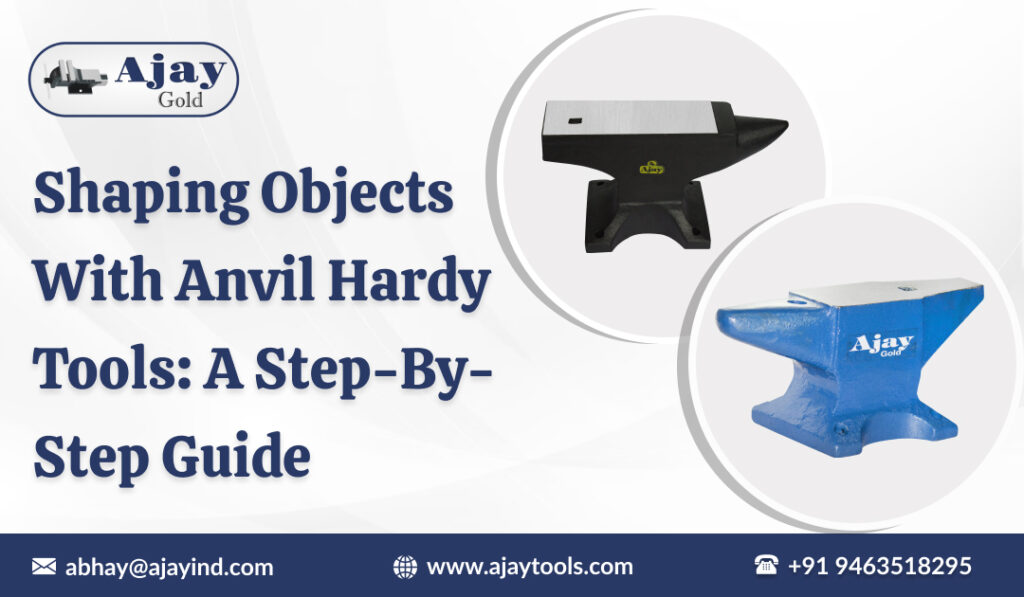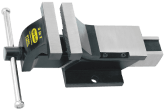You may have heard of the anvil hardy tools, a metalworking tool with a large block of metal and a flat top surface used for striking objects. It is frequently used in forging, which involves techniques like shrinking, drawing upon, swaging, upsetting, and forge welding. The anvil is the primary tool used in blacksmithing, and some people may already be familiar with how to use it.
What is Anvil Hardy Tool used for?
For beginners, anvil tools are the most effective tool used to shape, flatten, and curve metal objects. Before getting into details, you need to understand its different uses. To know what are the parts of a blacksmiths anvil, take a look at the following parts of the anvils along with their functions:
Horn
Blacksmiths typically use the horn of an anvil to bend and straighten objects. Some anvils even have multiple horns for added versatility during the blacksmithing process.
The Face
The face is one of the most commonly used parts of anvil. The face of modern anvils is made of hardened steel. The edges around the face will be rounded. Some blacksmiths are likely to hammer their objects on the edges to apply more force to small sections of the objects.
The Step
The step is located between the face and the horn of the hardy anvil tool. Unlike the face, the step has sharp edges that are used to cut metal. Generally, you place the metal on the edge of the step, hammer it, and it will cut apart.
The Hardy Hole
Did you know why is it called a hardy hole in an anvil? The hole is so named because it is designed to hold hardy tools. By utilizing the hardy hole, you can create a variety of items and utilize your anvil like a versatile Swiss army knife.
The Pritchel Hole
It is used for pritchels. Well, pritchel is a kind of punch used in making horseshoes. Therefore, it allows the punch to go through the object/metal. It is a round version of Hardy Hole.
How to Shape Objects Using Hardy Anvil Tool?
The initial stage in every forging process is to choose the material. Blacksmithing involves forging iron or iron alloys, thus your options extend beyond wrought iron to include other kinds of steel and cast iron. Because of the many benefits that steel and its variations offer over iron, it has become more and more popular in recent years. Consequently, the choice of bottles comes down to selecting the proper grade of steel for blacksmithing.
This phase enables you to determine whether you can work on the material without any problems. You need to hit the hammer on the hot workpiece. You can use an anvil or not in this step. This is a practice and testing of your forging techniques. You must therefore practise the hammering motion with your lower arm.
Striking and shaping the object is the process where you start the blacksmithing process using blacksmith anvil tools. In this step, the blacksmiths forge/shape the object to create a base shape.
The tremendous abilities of a blacksmith come to play their roles. An object is defined through the process of detailing. Effective use of an anvil’s horn and step is made in this stage. This stage is utilised to add features to the formed item. Even still, the blacksmith must be technically correct in order to define the object.
What is an Anvil Price in India?
Anvil tool is one of the most useful hardy tools. The price of an anvil tool may vary from one manufacturer to another. Therefore, you can check and explore the price list mentioned by different manufacturers. You can shop for anvil tools from Ajay Tools. Apart from anvils, you can explore different hand tools available at Ajay Tools.
Why are anvils shaped like that?
The tools used for blacksmithing are designed with specific shapes and angles to help in the shaping of different materials. Their unique surfaces enable them to perform various tasks during the blacksmithing process.
Conclusion
The blog shares important factors of anvil hardy tools and their uses. When you buy an anvil for your workshop, make sure to check its quality. For the best quality products, you can contact Ajay Tools.


